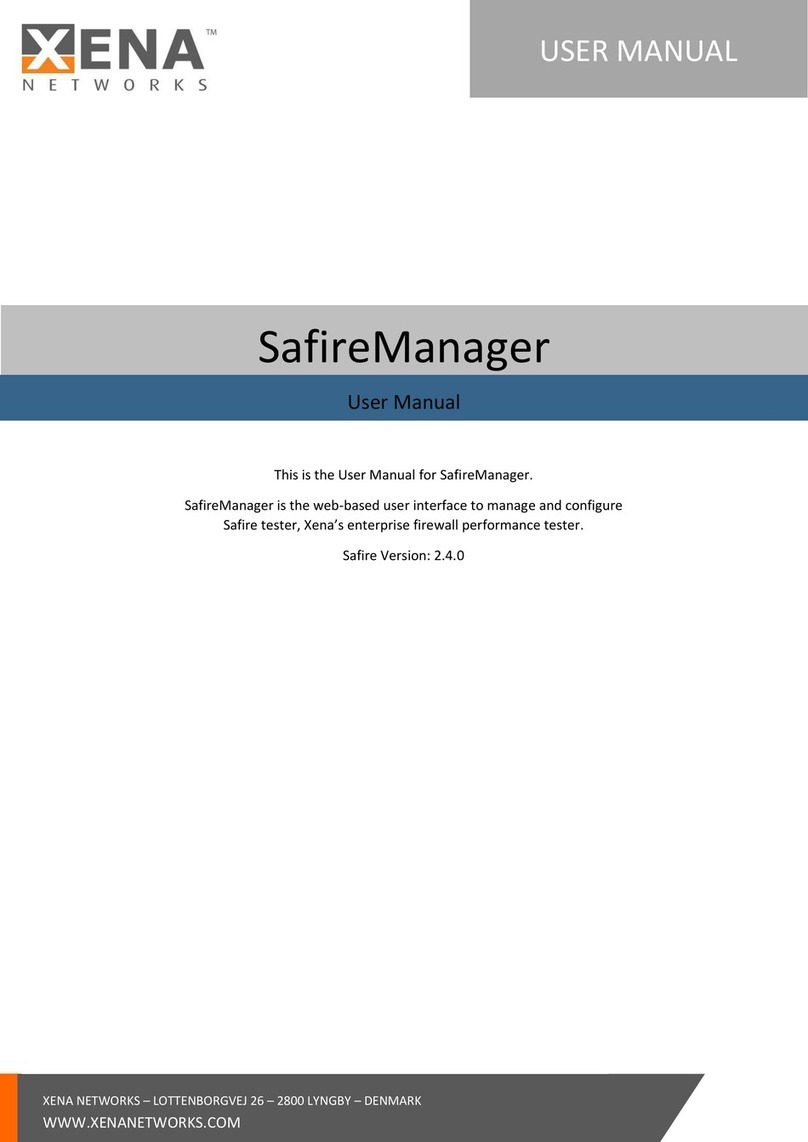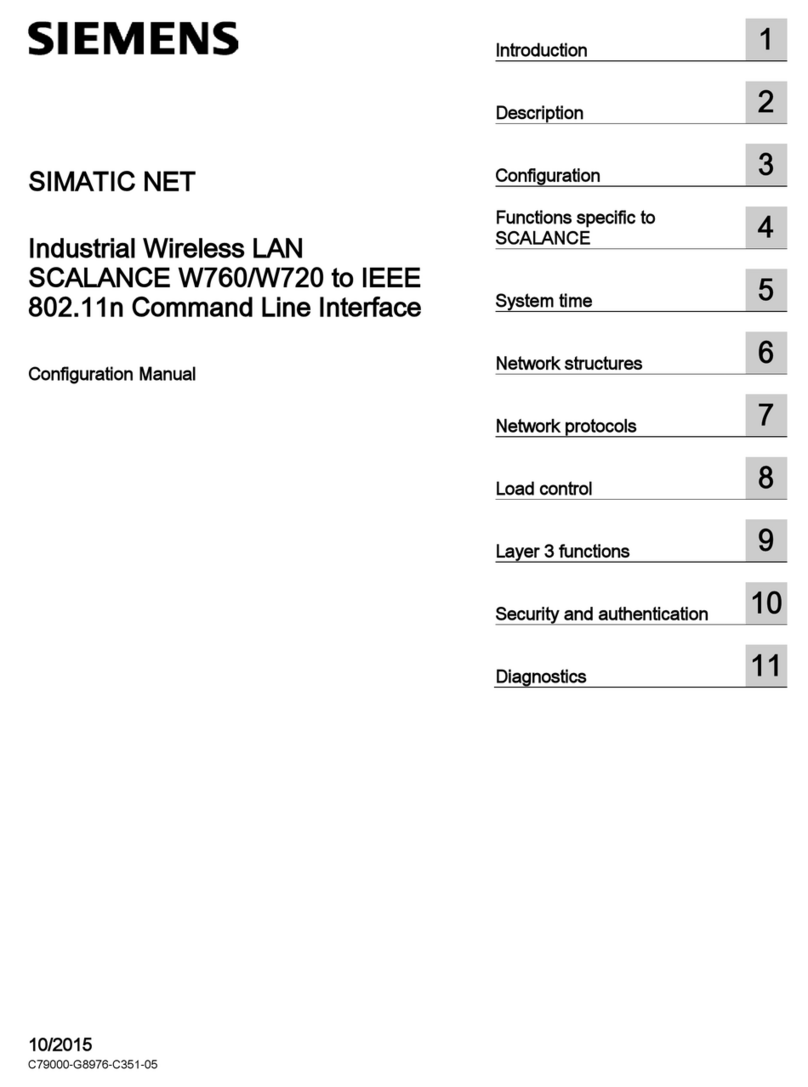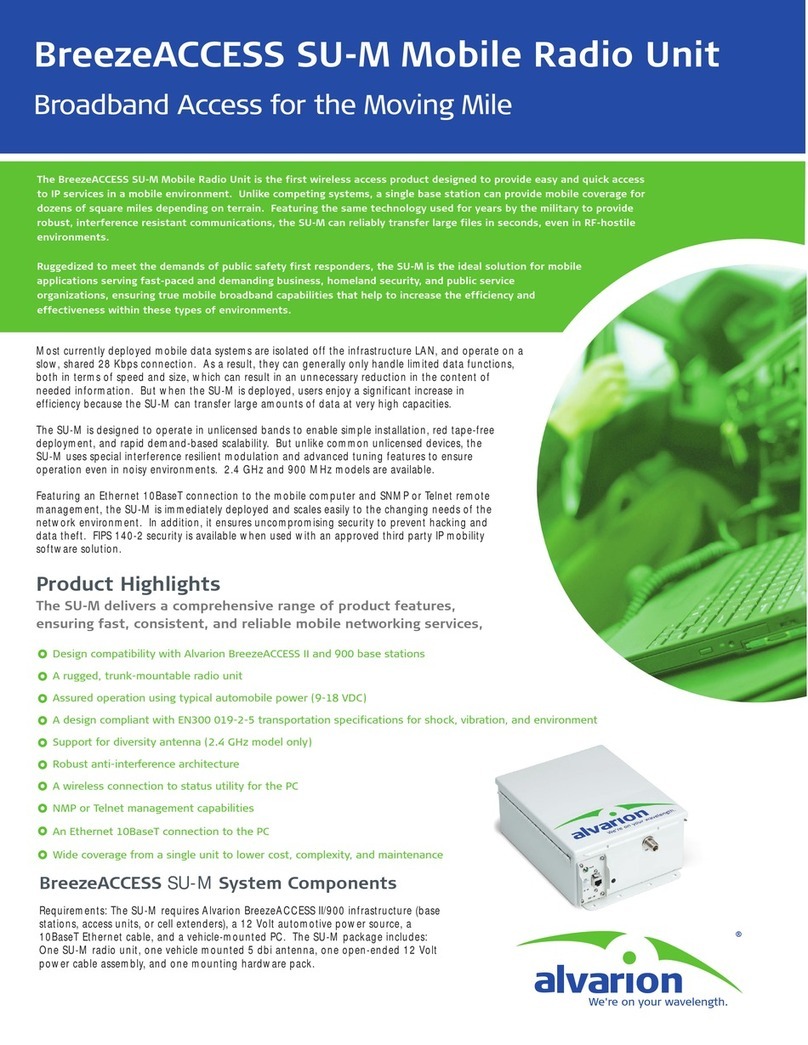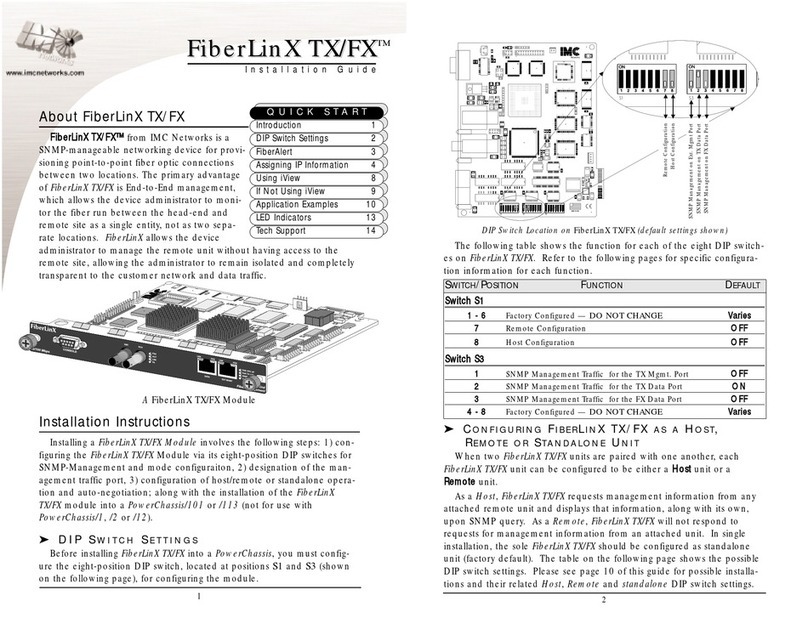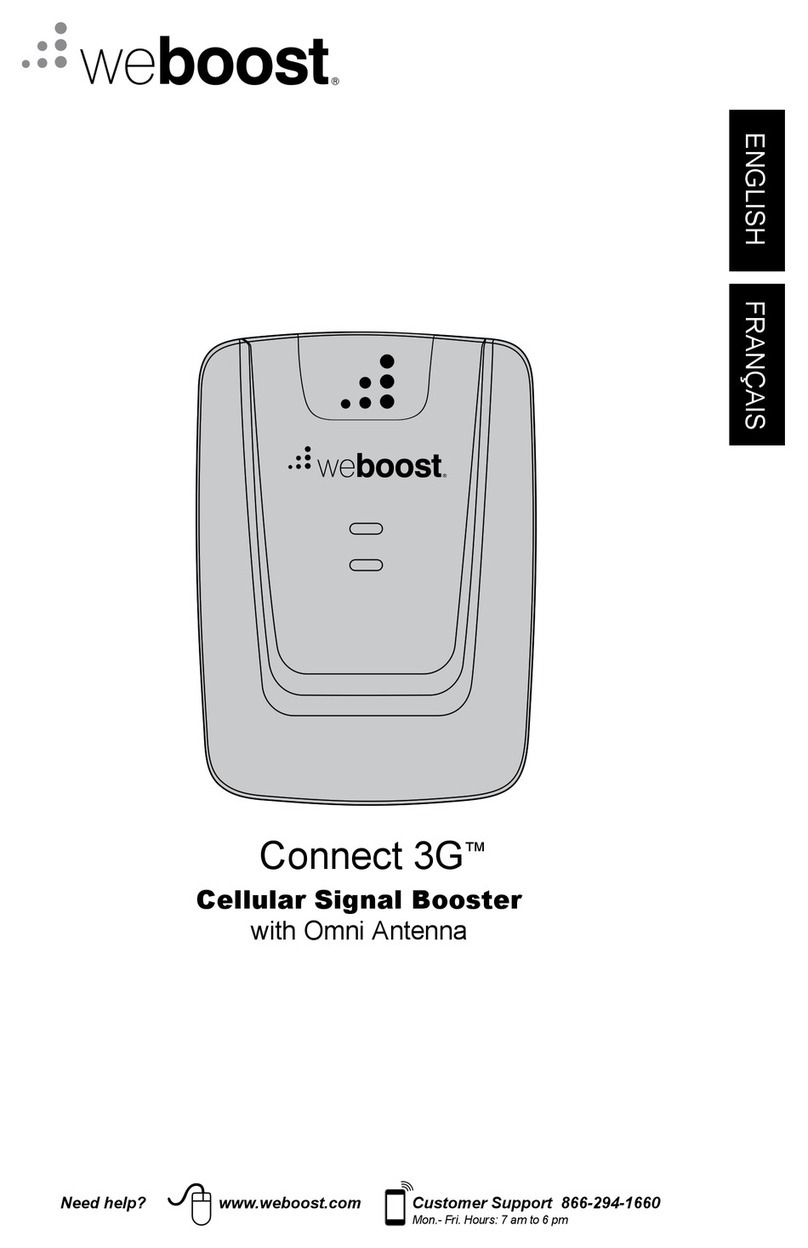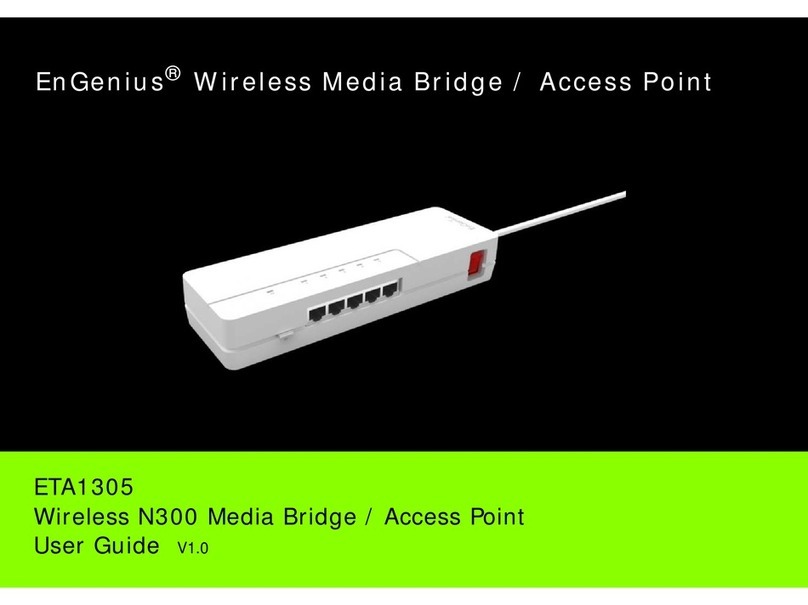HBM ML71BS6 User manual

Operating Manual
English
ML71BS6

Hottinger Baldwin Messtechnik GmbH
Im Tiefen See 45
D-64293 Darmstadt
Tel. +49 6151 803-0
Fax +49 6151 803-9100
www.hbm.com
Mat.: 7-2002.0572
DVS: A00851_03_E00_02 HBM: public
06.2018
EHottinger Baldwin Messtechnik GmbH.
Subject to modifications.
All product descriptions are for general information only.
They are not to be understood as a guarantee of quality or
durability.

ML71BS6 A00851_03_E00_02 HBM: public 3
English
1 Safety instructions 4........................................
2 Markings used 6............................................
2.1 The markings used in this document 6..........................
2.2 Symbols on the product 6.....................................
3 Introduction 7..............................................
4 Connections 8..............................................
4.1 Pin assignment 8............................................
5 Front panel 9...............................................
6 Parameterization 10..........................................
6.1 Settings CAN1 /CAN2 10......................................
6.1.1 Panel output signals CAN 1 12.................................
7 Menu structure in set‐up mode 15............................
8 CAN protocol 16.............................................
8.1 Measurement signal transmission 16............................
8.1.1 Absolute values in Float 16.....................................
8.1.2 In digits as Long 16...........................................
8.1.3 In digits as Word 16...........................................
8.1.4 Identifier assignment 17.......................................

Safety instructions
4A00851_03_E00_02 HBM: public ML71BS6
1 Safety instructions
Use in accordance with the regulations
The ML71BS6 CAN bus module is to be used exclusively for measurement
tasks and directly related control tasks. Use for any purpose other than the
above shall be deemed to be not in accordance with the regulations.
To ensure safe operation, the device may only be operated in accordance with
the information given in the Operating Manual. It is also essential to comply
with the legal and safety requirements for the application concerned during
use. The same applies to the use of accessories.
General dangers of failing to follow the safety instructions
The ML71BS6 CAN bus module complies with the state of the art and is
fail‐safe. The device may give rise to further dangers if it is inappropriately
installed and operated by untrained personnel.
Any person instructed to carry out installation, commissioning, maintenance or
repair of the device must have read and understood the Operating Manual and
in particular the technical safety instructions.
Remaining dangers
The scope of performance and supply of the ML71BS6 only covers part of the
range of measurement technology. In addition, equipment planners, installers
and operators should plan, implement and respond to the safety engineering
considerations of measurement technique in such a way as to minimise
remaining dangers. Prevailing regulations must be complied with at all times.
There must be reference to the remaining dangers connected with
measurement technique.
Working safely
Error messages must only be acknowledged when the cause of the error has
been removed and no further danger exists.
The device complies with the safety requirements of DIN EN 61010‐Part 1
(VDE 0411‐Part 1); Protection Class I.

Safety instructions
ML71BS6 A00851_03_E00_02 HBM: public 5
To ensure adequate immunity from interference, use only Greenline shielded
ducting (see HBM offprint ”Greenline shielding design, EMC‐compliant measur
ing cable; G36.35.0)
Conversions and modifications
No modifications that affect the design or the technical safety of the ML71BS6
CAN bus module may be carried out without our express agreement. Any
modification shall exclude all liability on our part for any resulting damage.
In particular any repair or soldering work on motherboards is prohibited. When
exchanging complete modules, use only original parts from HBM.
Qualified personnel
This instrument must only to be installed and used by qualified personnel,
strictly in accordance with the technical data and the safety requirements and
regulations listed. It is also essential to comply with the legal and safety
requirements for the application concerned during use. The same applies to
the use of accessories.
Qualified personnel means persons entrusted with the installation, assembly,
commissioning and operation of the product who possess the appropriate
qualifications for their function.
Maintenance and repair work on an open device with the power on must only
be carried out by trained personnel who are aware of the danger involved.

Markings used
6A00851_03_E00_02 HBM: public ML71BS6
2 Markings used
2.1 The markings used in this document
Important instructions for your safety are specifically identified. It is essential to
follow these instructions in order to prevent accidents and damage to property.
Symbol Significance
Notice This marking draws your attention to a situation in
which failure to comply with safety requirements can
lead to damage to property.
Important
This marking draws your attention to important
information about the product or about handling the
product.
Tip
This marking indicates application tips or other
information that is useful to you.
Information
This marking draws your attention to information
about the product or about handling the product.
Emphasis
See….
Italics are used to emphasize and highlight text and
references to other chapters and external documents.
2.2 Symbols on the product
CE mark
The CE mark enables the manufacturer to guarantee that
the product complies with the requirements of the rele
vant EC directives (the declaration of conformity is avail
able at http://www.hbm.com/HBMdoc).

Introduction
ML71BS6 A00851_03_E00_02 HBM: public 7
3 Introduction
The ML71BS6 is an MGCplus system module that takes measurement data
from the MGC and outputs it as CAN messages. It records up to 128
measured values per CAN port, scales them and outputs them at the CAN bus.
Two independent CAN interfaces per channel and two different physical layers
(ISO 11898-24V and a ”low‐speed” link based on the Philips TJA1053
transceiver module) are supported.
The measurement data to be transmitted can be selected either by using the
AB22A/AB32 display and control panel or by using the “MGCplus Assistant”
software from HBM.

Connections
8A00851_03_E00_02 HBM: public ML71BS6
4 Connections
4.1 Pin assignment
The CAN bus is connected to the AP71 connection board by a 9‐pin Sub‐D
connector. You can connect two independent CAN field bus systems (female
connectors CAN1 and CAN2). Both the CAN interfaces are used to output the
MGCplus measurement data. Each of the interfaces can be assigned up to 128
measured values.
Connectors (male) CAN1/CAN2
1
5
6
9
CAN Shield
CAN_GND
CAN_L CAN_H
GND
CAN_V+
Physical layer:
High: Standard CAN speeds up to 1MBaud acc. to ISO11898
(24 V dielectric strength).
Low: Low-speed bus for in‐car communication up to 100 kBaud
(CAN_V+ must be connected to 12 V)
Fig. 4.1 CAN connection

Connections
ML71BS6 A00851_03_E00_02 HBM: public 9
5 Front panel
The front panel LEDs have a dual function:
In Level mode, the signal level at the analogue output is
displayed.
In Status mode, the LEDs are assigned as shown below:
LED caption Colour Meaning in Status mode
CHAN. yellow Channel selected
ERROR/WARN. red error/warning
Rx1 - not used
Tx1/OVRN1 red/yellow CAN protocol transmitted
BUSERR1 red Bus error at CAN1
Rx2 yellow not used
Tx2/OVRN2 red/yellow CAN protocol transmitted
BUSERR2 red Bus error at CAN2
Analog output (BNC connector (female))
Any voltage from -10 V to +10 V can be output through
the female BNC connector by interface command.
ML71
BS6

Connections
10 A00851_03_E00_02 HBM: public ML71BS6
6 Parameterization
6.1 Settings CAN1 /CAN2
The baud rate, the transmission formats, the number of signals and the output
rate of the 1st CAN bus are set here. The same menu is applied
correspondingly to the 2nd CAN bus.
The maximum number of signals for a bus is 128 signals.
The following output rates are offered for selection depending on the number of
output signals. In the case of the 2nd CAN port, please note that the maximum
possible output rates can only be achieved if no signals have been selected at
CAN port1.
If a selected rate cannot be achieved, the messages will be output as quickly
as possible and an error message will be generated. Transmission will then not
be at a fixed frequency.
Number of signals
Format
Output rate [Hz]
CAN1 CAN2 Port1 Port2
4 4 INT16 2400 800
4 4 INT32 2400 600
4 4 Float32 2400 400
8 8 INT16 1200 800
8 8 INT32 1200 400
8 8 Float32 1200 300
16 16 INT16 600 600
16 16 INT32 600 300
16 16 Float32 600 300
The first ID of a range can be set. The last ID is derived from this and from the
number of signals.

Connections
ML71BS6 A00851_03_E00_02 HBM: public 11
1. Use the shift key to change to set‐up mode and then press the function
key . Use the cursor keys to select “Settings CAN1” and confirm
with .
Settings CAN1 CHANNEL3
1000 kBaud
System Display Parameters Options
Float
8
1200 1/2
Baud rate
Format
Number of signals
Output rate
ID range used
1000 kBaud
667 kBaud
.
.
10 kBaud
Float
32-bit integers
16-bit integers
1 1/s
10 1/s
.
.
1200 1/s
First ID
Last ID
Reset CAN1 port
640
641
Fig. 6.1 CAN1 / CAN2 dialogue window
2. Use the cursor keys to choose the baud rate selection field. Use to
call the selection list and choose the desired baud rate. Confirm with .
3. Select the output rate in the same way as for 2.
4. Use the cursor keys to select the “Number of signals” edit field and en
ter the desired figure.
5. Select the output rate in the same way as for 2.
6. Use the cursor keys to select the “First ID” edit field and enter the de
sired figure. The “Last ID” edit field is set automatically.

Connections
12 A00851_03_E00_02 HBM: public ML71BS6
7. Use the shift key to change to measuring mode and confirm the fol
low‐up question with .
6.1.1 Panel output signals CAN 1
This is where to set the sources for the signals to be transmitted and if
necessary, scaling for the output values.
1. Use the shift key to change to set-up mode and then press the function
key . Use the cursor keys to select “Sources CAN1” and confirm
with .
Format 1; Absolute values Float
Sources CAN1 CHANNEL 3
CAN signal 1
System Display Parameters Options
Gross
Source for
MGC channel
Signal
CAN signal 1
CAN signal 2
.
.
CAN signal n
Gross
Net
Store1
Store2
Combined PV
8
Fig. 6.2 CAN1 / CAN 2 output signals dialogue window
2. Use the cursor keys to select the “Source for MGC channel” selection
field. Use to call the selection list and choose the desired CAN signal.
Confirm with .

Connections
ML71BS6 A00851_03_E00_02 HBM: public 13
3. Use the cursor keys to select the MGC channel field and enter the de
sired channel (e.g. 8.1).
4. Use the cursor keys to select the “Signal” edit field. Use to call the
selection list and choose the desired signal. Confirm with .
Formats 2 and 3; 32‐bit integers and 16‐bit integers
You must also specify scaling here.
1. Use the shift key to change to set-up mode and then press the function
key . Use the cursor keys to select “Sources CAN1” and confirm
with .
Sources CAN1 CHANNEL 3
CAN signal 1
System Display Parameters Options
Gross
0
Source for
MGC channel
Signal
Scaling
Point 1
CAN signal 1
CAN signal 2
.
.
CAN signal n
Gross
Net
Store1
Store2
Combined PV
Point 2
dig
10
7680000 dig
1000
8
kN
kN
Channel 8 to 128
Fig. 6.3 CAN1 / CAN 2 output signals dialogue window
2. Use the cursor keys to select the “Source for MGC channel” selection
field. Use to call the selection list and choose the desired signal.
Confirm with .

Connections
14 A00851_03_E00_02 HBM: public ML71BS6
3. Use the cursor keys to select the MGC channel field and enter the de
sired channel (e.g. 8.1).
4. Use the cursor keys to select the “Signal” edit field. Use to call the
selection list and choose the desired signal. Confirm with .
5. Use the cursor keys to select the “Point 1” edit field and enter the digit
value.
6. Use the cursor keys to select the next edit field and enter the value of
the accompanying physical unit.
7. Use the cursor keys to select the “Point 2” edit field and proceed in the
same way as for points 5 and 6.
8. Use the shift key to change to measuring mode and confirm the fol
low‐up question with .

Menu structure in set‐up mode
ML71BS6 A00851_03_E00_02 HBM: public 15
7 Menu structure in set‐up mode
The set-ups for the MGCplus unit are subdivided into groups according to their
function. Pressing the shift key takes you to the set‐up dialogue, and the
selection bar is displayed.
System-specific set
tings that in most
cases are only car
ried out during the
initial start‐up or for a
new measurement
task.
User-defined display
settings such as the
required method of
representing values,
function key assign
ment or the specifi
cation of channel
names.
Output signal CAN1
Output signal CAN2
Settings CAN1
Settings CAN2
Version
Display in Setup
mode
Setup for channel 3
Display Parameters OptionsSystem
Setup menu
DisplaySystem Parameters Options
You will find more notes on working with the AB22A display and control panel
in the “MGCplus with AB22A/AB32” manual.

CAN protocol
16 A00851_03_E00_02 HBM: public ML71BS6
8 CAN protocol
Up to 128 measured values can be transmitted at each bus.
A number of signals is assigned to each bus. This determines the signal trans
mission rate at the particular CAN port (in the case of CAN port 2, the operat
ing mode of CAN port 1 is also a factor).
8.1 Measurement signal transmission
The operating priority for the two CAN ports is different. CAN port 1 always
takes priority, to ensure that the transmission pattern of the data sent from
here is exactly periodic. When sending a synch signal, the values sent thus far
are valid here. CAN port 2 has the lower priority. Measurement signals can be
transmitted in the following three formats.
8.1.1 Absolute values in Float
In each 8-byte CAN message, 2 signals are transmitted as Float values
(32-bit). This is dealing with scaled measured values.
8.1.2 In digits as Long
In each CAN message, 2 of these values are transmitted as Long (32‐bit), with
the MSByte1) always being 0. Digital value scaling can be preset by using two
point calibrations.
8.1.3 In digits as Word
In each CAN message, 4 of these values are transmitted as Words (16‐bit).
Digital value scaling can be preset by using two point calibrations.

CAN protocol
ML71BS6 A00851_03_E00_02 HBM: public 17
8.1.4 Identifier assignment
Default assignment
The possible formats are sent out for the same signal under different
identifiers, so that fixed scaling can be assigned in the receiver of a specific ID.
The synch message at CAN port 1 has the identifier 80h2) and does not
contain any data bytes.
1) Most significant byte 2) This hexadecimal number corresponds to
the decimal value 128
Measurement data messages CAN port 1
Absolute values in Float (identifier: default values)
Identifier 8-byte data field
0x200-0x23F 4-byte measured value 1
(absolute Float)
4-byte measured value 2
(absolute Float
In digits from 7680000 (= 24-bit) as Long
Identifier 8-byte data field
0x240-0x27F 4-byte measured value 1
(signed integers in digits from
7680000)
4-byte measured value 1
(signed integers in digits from
7680000)
In digits from 30000 (= 16-bit) as Word
Identifier 8-byte data field
0x280-0x29F 2-byte mea
sured value 1
(signed inte
gers in digits
from 30000)
2-byte mea
sured value 1
(signed inte
gers in digits
from 30000)
2-byte mea
sured value 1
(signed inte
gers in digits
from 30000)
2-byte mea
sured value 1
(signed inte
gers in digits
from 30000)

CAN protocol
18 A00851_03_E00_02 HBM: public ML71BS6
Measurement data messages CAN port 2
Absolute values in Float
Identifier 8-byte data field
0x300-0x33F 4-byte measured value 1
(absolute Float)
4-byte measured value 2
(absolute Float)
In digits from 7680000 (= 24-bit) as Long
Identifier 8-byte data field
0x340-0x37F 4-byte measured value 1
(signed integers in digits from
7680000)
4-byte measured value 1
(signed integers in digits from
7680000)
In digits from 30000 (= 16-bit) as Word
Identifier 8-byte data field
0x380-0x39F 2-byte mea
sured value 1
(signed inte
gers in digits
from 30000)
2-byte mea
sured value 1
(signed inte
gers in digits
from 30000)
2-byte mea
sured value 1
(signed inte
gers in digits
from 30000)
2-byte mea
sured value 1
(signed inte
gers in digits
from 30000)
Adjusting the ranges
As a variant to the default setting, you can choose the start of the ID range you
are using for the selected format at the particular CAN bus.

CAN protocol
ML71BS6 A00851_03_E00_02 HBM: public 19

www.hbm.com
HBM Test and Measurement
Tel. +49 6151 803-0
Fax +49 6151 803-9100
measure and predict with confidence
A00851_03_E00_02 7-2002.0572 HBM: public
Other manuals for ML71BS6
1
Table of contents
Popular Network Hardware manuals by other brands
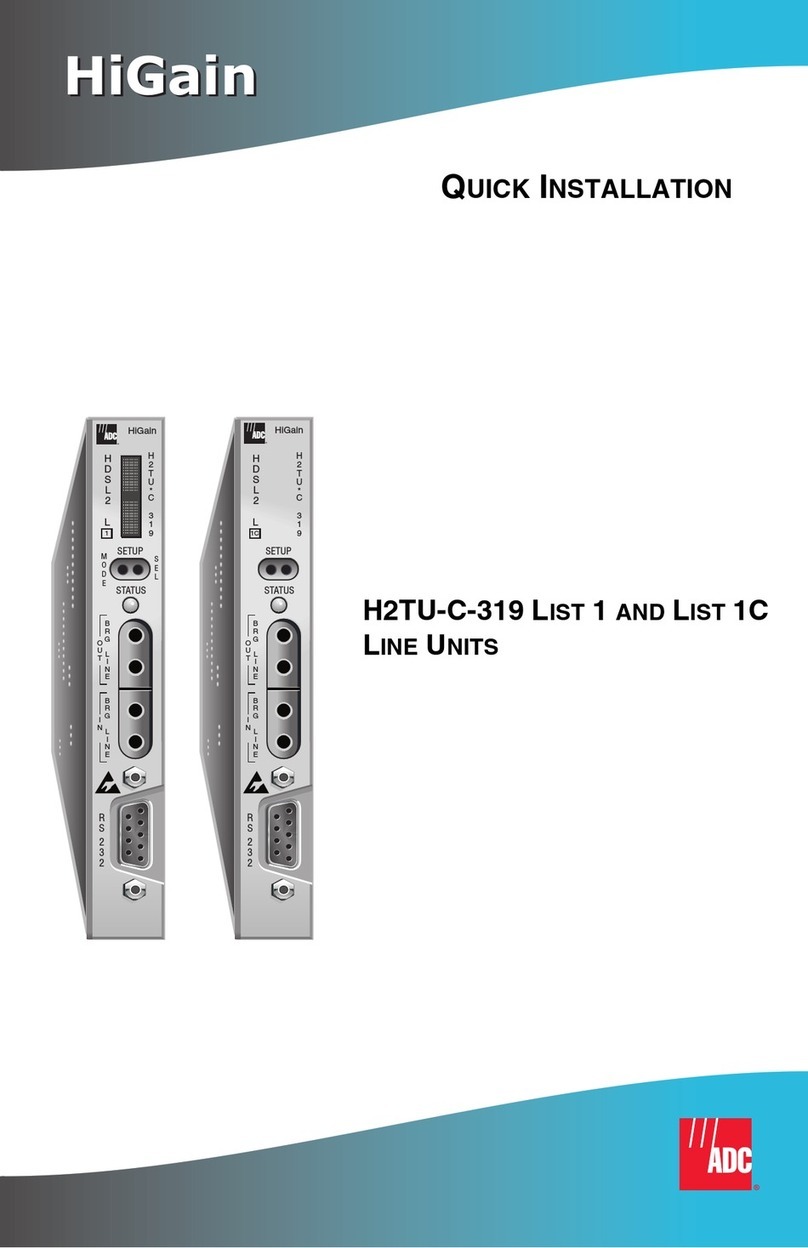
ADC
ADC HiGain H2TU-C-319 List 4E Quick installation
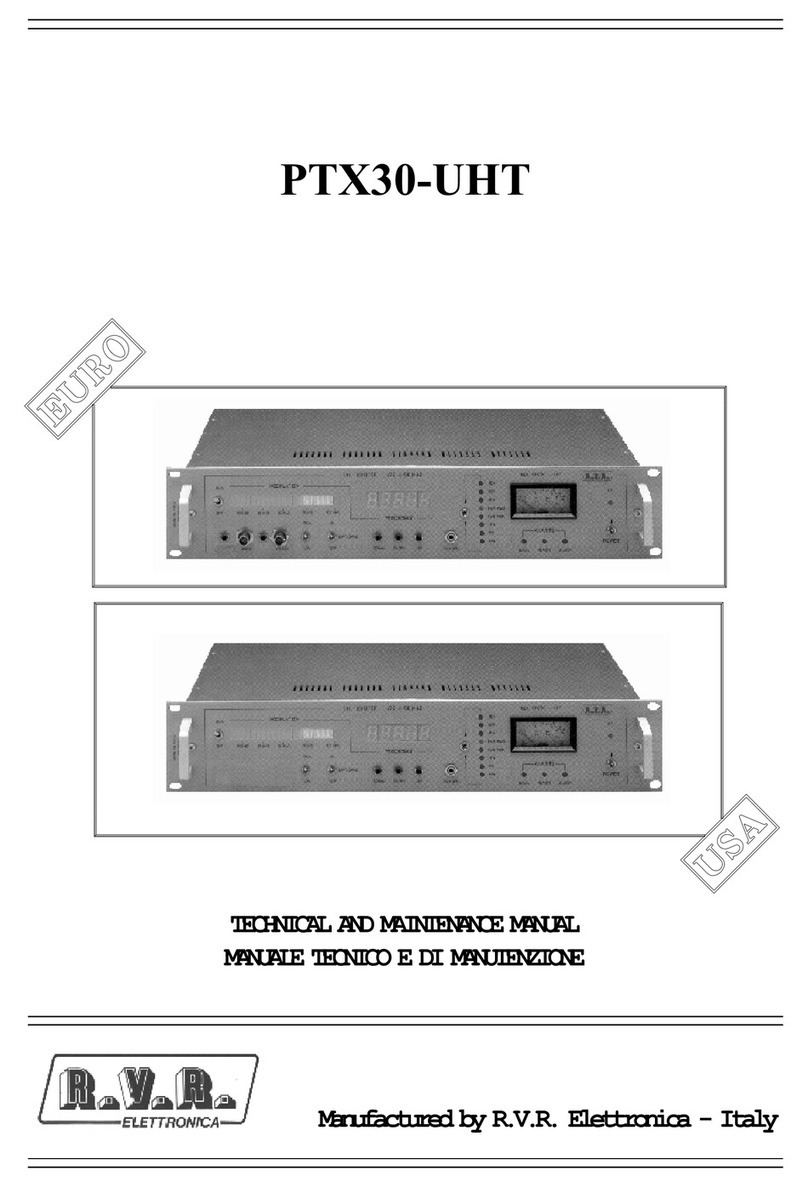
R.V.R. Elettronica
R.V.R. Elettronica PTX30-UHT Installation, Technical and Maintenance Manual
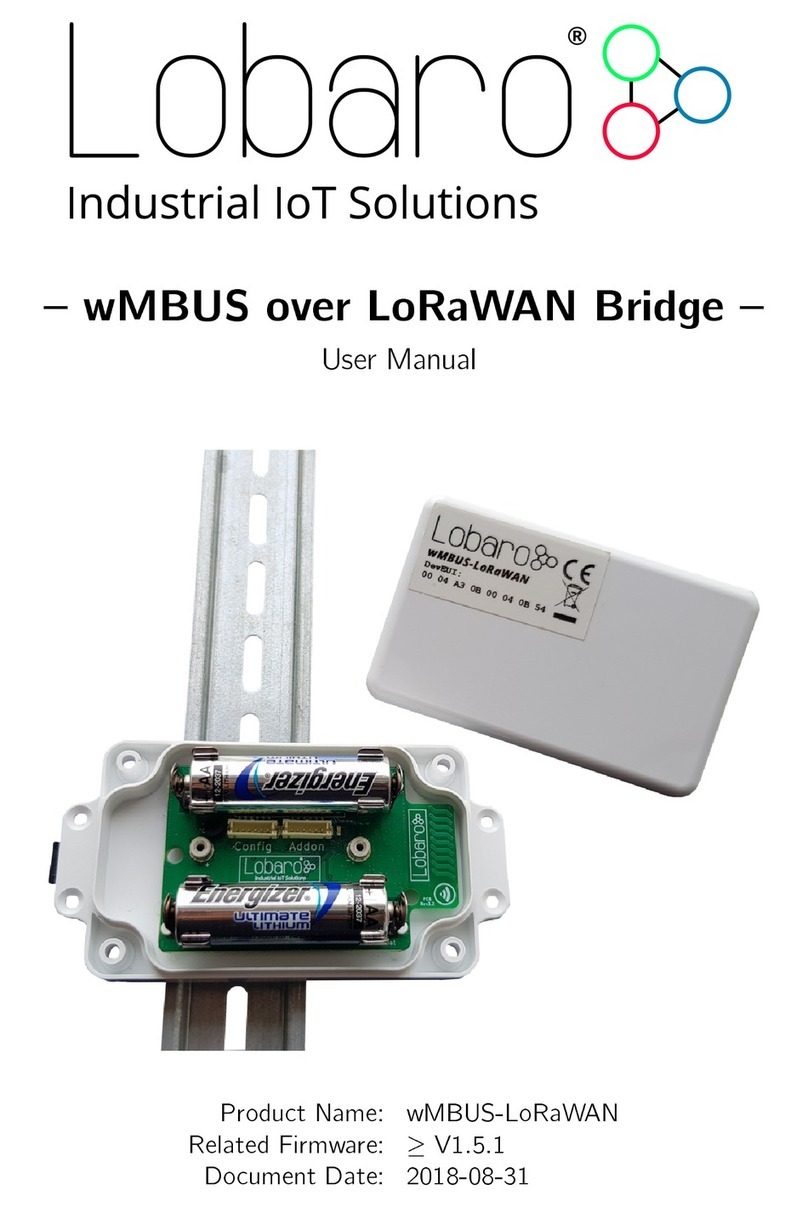
Lobaro
Lobaro wMBUS-LoRaWAN user manual
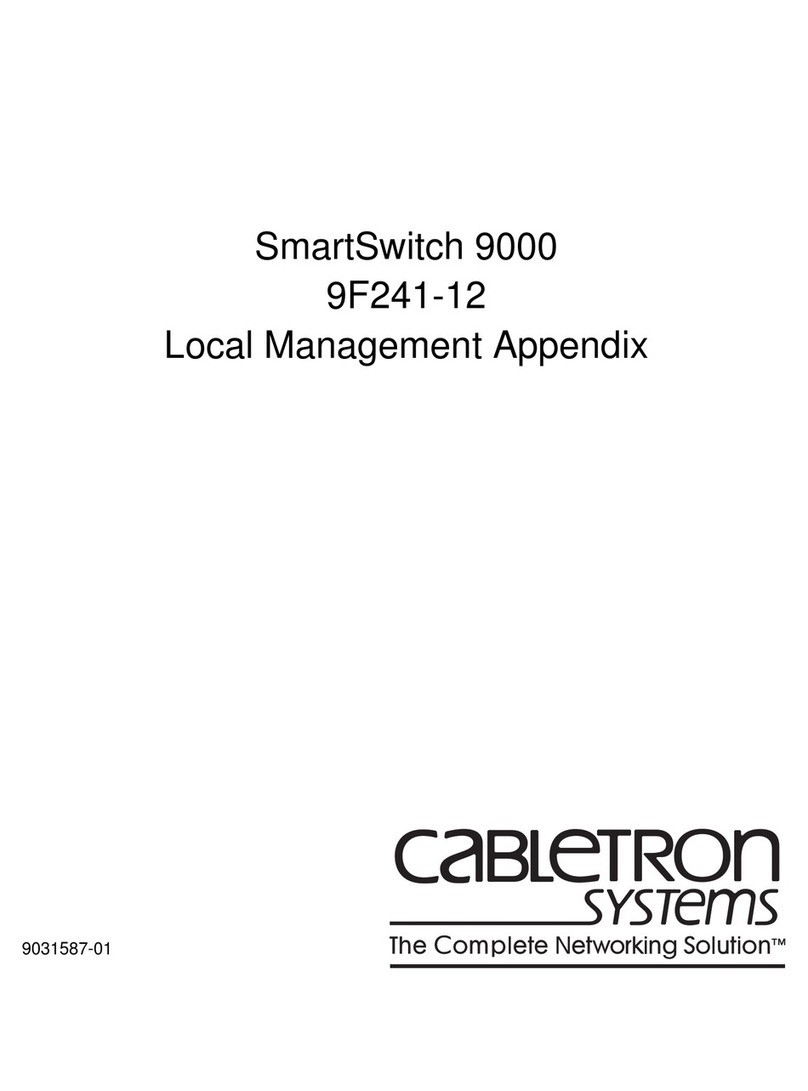
Cabletron Systems
Cabletron Systems 9F241-12 Appendix

Idis
Idis DR-6316PS-A quick guide

HIK VISION
HIK VISION 1200KI instruction manual

